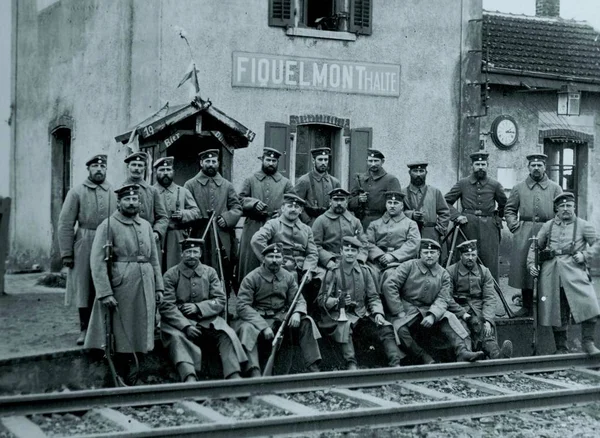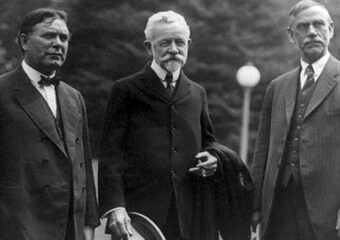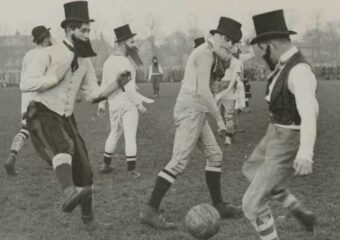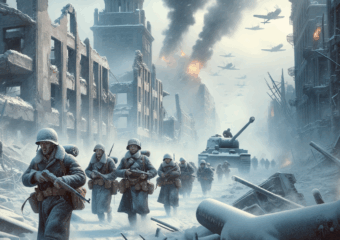World War I (1914-1918) marked a significant turning point in the history of warfare, transforming the landscape of military operations and strategies that would shape conflicts for decades to come. The horrors of trench warfare, the advent of new technologies, and the complex web of international alliances forged during this era created a unique environment that redefined how wars were fought. This article explores the multifaceted impact of World War I on modern warfare, examining the evolution of military strategies, technological innovations, propaganda tactics, military leadership, international alliances, and the enduring legacy of the Great War on contemporary armed conflicts.
The Evolution of Military Strategy Post-World War I
World War I catalyzed a profound evolution in military strategy, moving from traditional tactics reliant on maneuver warfare to more complex approaches that incorporated technology and logistics. The stalemated trench warfare of the Western Front highlighted the need for new strategies to break the deadlock; hence, military thinkers began to advocate for combined arms operations. This concept involved integrating infantry, artillery, and air support to create more fluid and dynamic battlefield scenarios.
The interwar period saw the rise of mechanized warfare, inspired by the lessons of the Great War. Military leaders began to recognize the potential of armored vehicles and aircraft to change the nature of ground combat. The introduction of tactics such as Blitzkrieg in World War II can be traced back to the strategic lessons learned from World War I, emphasizing speed and surprise as central components of military doctrine.
Moreover, World War I emphasized the importance of intelligence and reconnaissance. The use of aerial reconnaissance to inform ground operations became a critical factor in planning military campaigns. As a result, modern warfare strategies have increasingly focused on the integration of information and intelligence to gain a strategic advantage over adversaries.
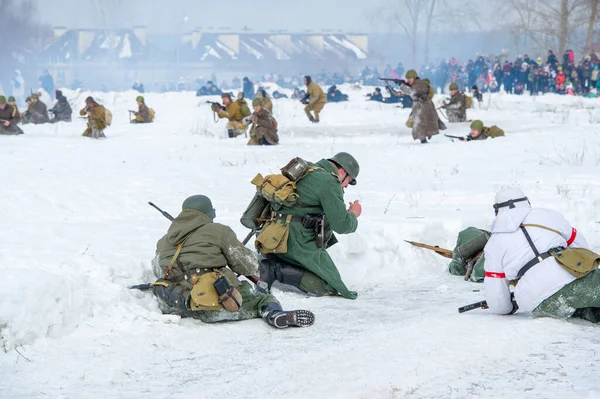
The concept of total war also emerged from World War I, where entire nations mobilized for conflict, blurring the lines between civilian and military targets. This realization led to the development of doctrines that consider the moral and ethical implications of warfare, prompting military leaders to engage with the concept of limited warfare in certain contexts.
Furthermore, the experiences of World War I underscored the importance of logistics and supply chains in sustaining military campaigns. Modern military strategies prioritize logistical efficiency, ensuring that forces are adequately supplied and supported throughout various phases of conflict.
In summary, the strategies employed and lessons learned from World War I laid the groundwork for contemporary military operations, which are characterized by technological integration, intelligence-focused strategies, and an understanding of the complexities of modern warfare.
Technological Innovations Shaping Modern Combat Today
The technological advancements that emerged during World War I have had a lasting influence on modern combat.
- The war witnessed the introduction of the tank, a revolutionary armored vehicle that changed ground warfare dynamics. Tanks allowed armies to breach enemy lines and support infantry assaults, marking a significant departure from traditional cavalry tactics. This innovation paved the way for the mechanized warfare that would dominate future conflicts.
- Aerial warfare also emerged significantly during World War I. Initially used for reconnaissance, aircraft evolved into bombers and fighter planes, fundamentally altering the battlefield. The lessons learned about air power led to the development of air forces as separate branches of military operations, emphasizing control of the skies as a crucial component of modern military strategy.
- Chemical warfare was another grim innovation of World War I, leading to the development of more sophisticated chemical agents and protective gear. While the ethics surrounding chemical weapons have led to international prohibitions, the technological race for more effective means of waging war remains a pervasive reality. Modern militaries continue to explore advanced weaponry, including non-conventional and cyber warfare capabilities.
The war also spurred innovations in communication technologies. The widespread use of radio and signal flares improved coordination among troops, enabling faster and more effective responses on the battlefield. Today, secure communication systems and real-time data sharing are essential elements of military operations, enhancing situational awareness and decision-making.
Moreover, World War I laid the groundwork for the development of logistics and supply chain management in military contexts. Innovations in transportation, such as motor vehicles and railroads, facilitated the movement of troops and supplies, influencing modern military logistics strategies that prioritize efficiency and responsiveness.
In conclusion, the technological advancements that emerged during World War I not only revolutionized warfare at that time but continue to shape the tactics and strategies employed by modern militaries across the globe.
The Role of Propaganda in World War I Warfare Tactics
Propaganda played a crucial role in shaping public perception and morale during World War I, influencing the home front and the battlefield. Governments recognized the power of message control to rally support for the war effort and demonize the enemy. This understanding of propaganda’s significance laid the foundation for its use in future conflicts.
Throughout the war, various forms of propaganda were employed, including posters, films, and literature. These media were designed to inspire nationalism, encourage enlistment, and promote war bonds. The iconic imagery of the “Uncle Sam” poster in the United States exemplifies how propaganda was utilized to create a sense of duty among citizens and a desire to contribute to the national cause.
Moreover, propaganda served to maintain morale among troops. By portraying the war as a noble struggle against tyranny, governments sought to bolster soldiers’ resolve. The narratives crafted by propaganda agencies aimed to dehumanize the enemy and depict their defeat as essential for the safety and prosperity of the nation.
The strategic use of propaganda extended to misinformation campaigns intended to confuse or demoralize the enemy. Psychological warfare became an integral part of military tactics as forces sought to undermine the morale of opposing troops through disinformation and fear. The use of leaflets, radio broadcasts, and other means to spread disinformation has become a standard practice in military operations.
In the long term, the lessons learned from World War I propaganda have influenced how modern militaries approach psychological operations and information warfare. The rise of digital media and social networks has transformed the landscape of propaganda, enabling rapid dissemination of information and disinformation alike on a global scale.
The legacy of World War I propaganda demonstrates the enduring importance of narrative control in warfare. As modern conflicts increasingly involve information as a weapon, understanding the principles of propaganda cultivated during the Great War remains vital for contemporary military strategies.
Lessons Learned: How WWI Changed Military Leadership

World War I brought about significant shifts in military leadership and doctrine, emphasizing the need for adaptability and innovation among commanders. The brutal realities of trench warfare exposed the limitations of traditional military hierarchies and rigid command structures, prompting leaders to develop more flexible and responsive approaches to warfare.
One critical lesson was the importance of understanding the human element in warfare. The high casualty rates and psychological toll on soldiers highlighted the necessity for leaders to consider the welfare and morale of their troops. This understanding fostered a more empathetic approach to leadership, with commanders prioritizing the well-being of their soldiers to maintain fighting spirit.
Additionally, the war underscored the need for effective communication and collaboration between branches of the military. The integration of infantry, artillery, and air support required commanders to break down traditional barriers and foster joint operations. This collaborative mindset has become a cornerstone of modern military leadership, emphasizing the importance of a unified approach to complex battlefield scenarios.
The experiences of World War I also prompted a reevaluation of military education and training. The war highlighted the necessity for leaders to adapt to rapidly changing circumstances on the ground, leading to the incorporation of more dynamic and practical training methods in military academies. Today, modern military leaders are trained to think critically and adapt swiftly to emerging challenges.
Furthermore, the war’s impact on military leadership extended beyond the battlefield. It influenced the political landscape and the relationship between military and civilian authorities. The recognition of the military’s role in shaping national policy led to a more integrated approach to civil-military relations, which remains relevant in contemporary governance.
In summary, World War I instigated profound changes in military leadership, emphasizing adaptability, effective communication, and the importance of the human element. These lessons continue to resonate in modern military practices, shaping how leaders approach the complexities of contemporary warfare.
International Alliances and Their Impact on Warfare Dynamics
The intricate web of international alliances established before and during World War I profoundly affected the dynamics of warfare. The war highlighted how interconnected nations could influence military strategies and outcomes, leading to a reevaluation of the role of alliances in global conflicts.
The pre-war alliances, such as the Triple Entente and the Triple Alliance, created a volatile geopolitical landscape that contributed to the outbreak of the conflict. The war demonstrated how entangled commitments could escalate regional disputes into global confrontations. This realization has since influenced how nations approach alliance-building and conflict resolution, emphasizing the need for diplomacy and negotiation.
Moreover, the experiences of World War I prompted nations to reconsider the nature of military cooperation. The war’s scale necessitated collaboration among allied forces, leading to the establishment of joint command structures and coordinated strategies. This evolution paved the way for modern military alliances, such as NATO, which emphasize interoperability and mutual defense commitments.
The impact of international alliances also extended to the realm of intelligence sharing and logistical support. The necessity for coordinated supply chains and information exchange among allied forces became evident during the war, informing the principles of collaboration that characterize contemporary military alliances worldwide.
Furthermore, the war’s end and the subsequent Treaty of Versailles reshaped the global order, leading to new alliances and tensions. The consequences of these shifts are still felt today, as historical grievances and power dynamics continue to influence international relations and conflict scenarios.
In conclusion, World War I underscored the significance of international alliances in shaping warfare dynamics. The lessons learned from this era continue to inform contemporary military strategies and diplomatic efforts, highlighting the need for cooperation and collaboration in addressing global security challenges.
The Legacy of World War I on Contemporary Armed Conflicts
The legacy of World War I is deeply embedded in the nature of contemporary armed conflicts. Many of the strategies, technologies, and geopolitical dynamics established during this period continue to shape how wars are fought today. The Great War’s impact can be seen not only in military tactics but also in the socio-political landscape of the modern world.

